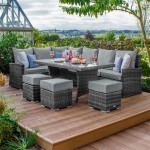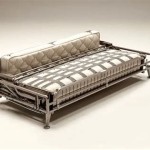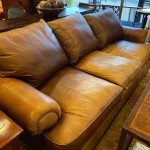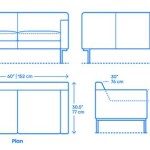The Ugly Sofa: More Than Just Aesthetics
The sofa often serves as the focal point of a living room, a gathering place for family and friends, and a haven for relaxation. While factors like comfort, size, and durability heavily influence purchasing decisions, the aesthetic appeal remains paramount for many. However, what constitutes an "ugly sofa" is subjective and multifaceted, determined by personal preferences, current design trends, and the surrounding environment. This article explores the various facets of sofa ugliness, analyzing contributing factors and offering insights into avoiding the acquisition of a sofa that might be deemed aesthetically displeasing.
The perception of ugliness in a sofa is not solely based on inherently unattractive features. A sofa deemed visually unappealing can stem from a mismatch with the existing décor, dated design elements, poor craftsmanship, or visible wear and tear. Understanding these contributing factors is crucial for making informed purchasing decisions and maintaining an aesthetically pleasing living space.
Subjectivity of Aesthetic Appeal
Aesthetic appeal is inherently subjective. What one individual finds charming or unique, another may find utterly repulsive. This is particularly true in the realm of furniture design, where personal taste plays a significant role. A sofa with bold colors and eccentric patterns might appeal to someone with a maximalist design sensibility, while someone favoring minimalism might perceive it as garish and overwhelming.
Furthermore, cultural backgrounds and personal experiences significantly shape aesthetic preferences. A sofa reminiscent of a childhood home might evoke feelings of nostalgia and comfort for one person, while another individual might associate it with outdated and undesirable design choices. This highlights the importance of considering personal taste and emotional connection when selecting a sofa.
Beyond individual preference, prevailing design trends heavily influence the perception of aesthetics. Sofas that were once considered stylish and fashionable can quickly become outdated and visually unappealing as trends evolve. For example, sofas with heavily rolled arms and ornate detailing, popular in past decades, might now appear outdated and clunky in a contemporary setting. Staying informed about current design trends and understanding how they align with personal taste is essential for avoiding the acquisition of a sofa that might quickly become unfashionable.
Contributing Factors to Perceived Ugliness
While aesthetics are subjective, certain factors often contribute to a sofa being perceived as “ugly” by a broad audience. These factors relate to the sofa's design, condition, and its integration with the surrounding environment.
Dated Design Elements: As previously mentioned, design trends evolve over time. Sofas featuring design elements that were popular in previous decades but are now considered outdated often contribute to the perception of ugliness. These obsolete details might include overly ornate carvings, specific fabric patterns like floral chintz, or bulky silhouettes. Avoiding these outdated features by opting for cleaner lines, neutral colors, and more contemporary silhouettes can help ensure the sofa remains stylish for longer.
Mismatched Décor: A sofa that clashes with the existing décor can significantly detract from the overall aesthetic appeal of a room. This mismatch can manifest in several ways: color clashes, conflicting styles, or inappropriate sizing. For example, a vibrant, modern sofa placed in a room with traditional, antique furniture would likely appear out of place and aesthetically jarring. Careful consideration should be given to the existing color palette, architectural style, and overall design theme of the room when selecting a sofa.
Poor Craftsmanship and Materials: The quality of the materials and the craftsmanship involved in constructing a sofa significantly impacts its aesthetic appeal. A sofa made with cheap materials, featuring uneven stitching, or exhibiting visible signs of poor construction will likely appear unattractive. Investing in a sofa made with high-quality materials and meticulous craftsmanship can not only enhance its durability but also contribute to its overall aesthetic appeal. Substandard materials often lead to premature wear and tear, further diminishing the sofa's visual appeal.
Visible Wear and Tear: Even a well-designed sofa can appear ugly if it exhibits significant wear and tear. Stains, tears, fading, and sagging cushions can detract from its overall aesthetic appeal. Regular cleaning and maintenance are crucial for preserving the appearance of a sofa. Promptly addressing spills and stains, rotating cushions to prevent uneven wear, and investing in professional cleaning services can help extend the lifespan and maintain the aesthetic appeal of the sofa.
Disproportionate Size and Shape: A sofa that is too large or too small for the room can disrupt the balance and harmony of the space. An oversized sofa can overwhelm a small room, making it feel cramped and cluttered, while a diminutive sofa can appear insignificant in a large room. Similarly, a sofa with an unconventional shape or silhouette might not integrate well with the existing furniture and architectural features. Measuring the room carefully and considering the scale and proportion of the sofa relative to the surrounding space is essential for achieving a visually pleasing outcome.
Strategies for Avoiding the "Ugly Sofa"
While personal taste ultimately dictates aesthetic preferences, several strategies can help minimize the risk of acquiring a sofa that is widely perceived as visually unappealing. These strategies involve careful planning, thorough research, and a thoughtful consideration of the existing décor.
Research and Planning: Before embarking on the search for a sofa, conduct thorough research on current design trends and available options. Explore different styles, materials, and colors to gain a better understanding of what appeals to your personal taste and what complements the existing décor. Online resources, magazines, and interior design professionals can provide valuable insights and inspiration. Creating a mood board or collecting images of sofas that align with your aesthetic preferences can help narrow down the search and prevent impulsive decisions.
Consider the Existing Décor: A sofa should seamlessly integrate with the existing décor of the room. Consider the color palette, architectural style, and overall design theme when selecting a sofa. Opt for colors and materials that complement the existing furniture and accessories. Avoid selecting a sofa that clashes with the existing décor or introduces conflicting styles. Bringing fabric swatches, paint chips, and photographs of the room to the furniture store can help ensure a cohesive and harmonious aesthetic.
Prioritize Quality and Durability: Investing in a sofa made with high-quality materials and meticulous craftsmanship can significantly enhance its aesthetic appeal and longevity. Choose a sofa with a sturdy frame, durable upholstery, and well-constructed cushions. While a higher price tag might be associated with superior quality, the long-term benefits outweigh the initial cost. A well-made sofa will not only look better but also withstand years of use and maintain its aesthetic appeal for longer.
Embrace Neutral Colors and Classic Designs: Opting for neutral colors and classic designs can minimize the risk of the sofa becoming outdated or clashing with future décor changes. Neutral colors like gray, beige, and white provide a versatile backdrop that can be easily adapted to different styles and preferences. Classic designs, such as the Chesterfield or Lawson sofa, have stood the test of time and remain perennially stylish. While bold colors and trendy designs might be tempting, they can quickly become unfashionable and limit decorating options in the future.
Seek Professional Advice: If struggling to select a sofa that aligns with your aesthetic preferences and complements the existing décor, consider seeking advice from an interior design professional. An interior designer can provide expert guidance on selecting the right style, color, and size of sofa for your space. They can also offer valuable insights on incorporating the sofa into the overall design scheme of the room. While hiring an interior designer entails an additional expense, the benefits of their expertise can be well worth the investment.
The perceived "ugliness" of a sofa is a complex issue influenced by a multitude of factors, including personal taste, current design trends, and the overall context of the room. By understanding the key contributors to aesthetic dissatisfaction and implementing strategic planning during the purchasing process, individuals can significantly reduce the likelihood of acquiring a sofa that fails to meet their visual expectations.

Why I M In Love With A Very Ugly Couch Styleblueprint

Pin On Really Bad Sofas

Ugly Couch Winner Chosen 27 East

Hilariously Ugly Couches That You Probably Owned At One Point In Time Dusty Old Thing

Why I M In Love With A Very Ugly Couch Styleblueprint

What Does Your Furniture Say About You Drsofa Com Blog

Just The Right Size Ugly Couch Before And After

Ugly Couch Photo Gallery North Shore News

These Ugly Couches That Every S Grandpas Had In Their Living Room Vintage Everyday

Ugly Couch 27 East








